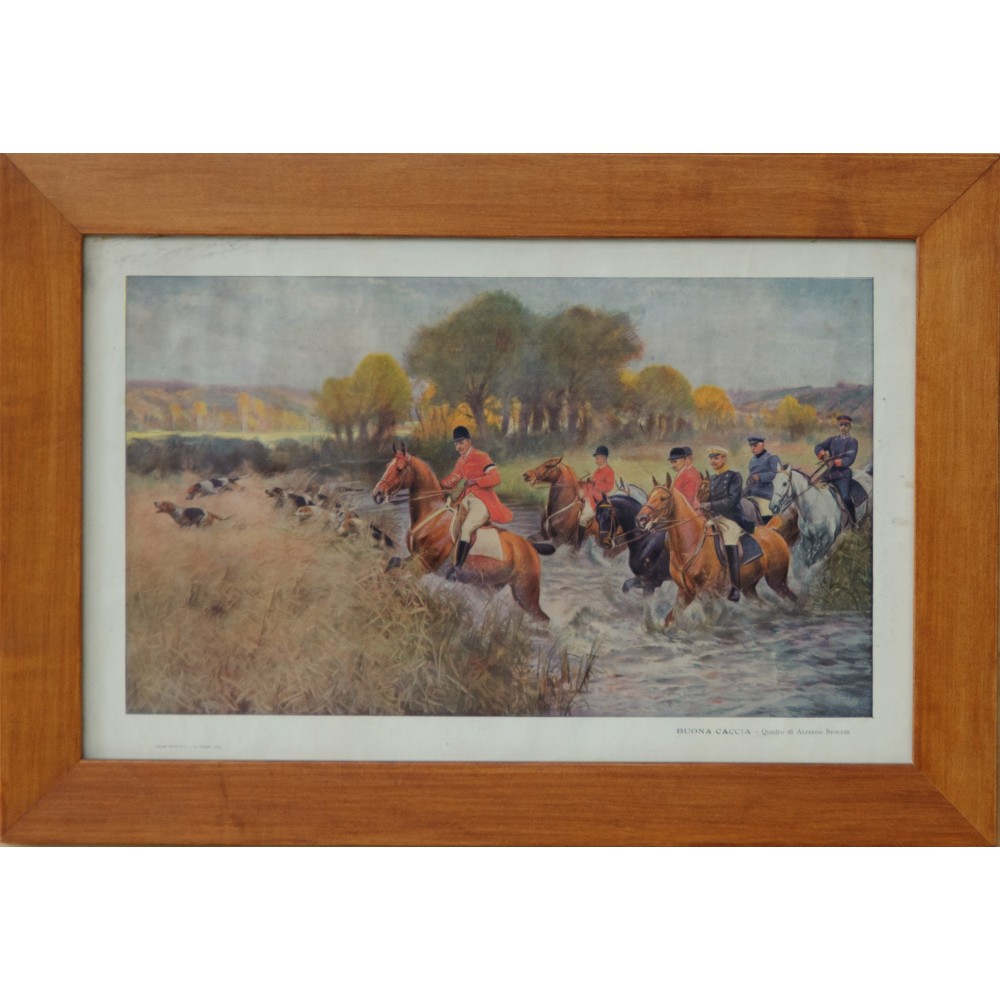



This lithograph is of a hunt with horses while crossing a river. In the foreground you see brown, black and white horses with riders dressed in red and rightmost rider with blue jackets. In front of the horses, to the right of the painting, you see hunting dogs in the grass.
This lithograph is of a hunt with horses while crossing a river. In the foreground you see brown, black and white horses with riders dressed in red and rightmost rider with blue jackets. In front of the horses, to the right of the painting, you see hunting dogs in the grass. The colours are bright and, while in the background the sky is grey, the meadows and trees contrast with bright colours such as green and yellow. In the background, in addition to the sky, you see the hills. It is of a good lithographic technique and shows many details of animals and people. Lithography (from the Greek lithos, "stone" and Graphene, "write") is a technique of mechanical reproduction of images. The process was invented in 1796 by Austrian Alois Senefelder using a stone quarry of Solnhofen, a town near Monaco of Bavaria. Initially called "chemical printing on stone", he changed its name to "art lithographic" or, more simply, quickly, lithography. It began to be used already in 1806 and immediately had a rapid spread, so much so that in 1818, 5 lithographs opened in Paris and in 1831 there were about 59 factories. In France, Bavaria and Russia it was the governments which supported the introduction and development presaging the commercial potential of new business, not so in Great Britain where the import of "lithographic" stones was prohibited. In Italy it was introduced around 1805, in Rome. At first a predecessor of the offset press was used, which spread rapidly in industry and then substantial changes such as the replacement of the stone slab with one of zinc, allowed the construction of the first pianocilindriche machines. around 1840. The nineteenth century sees the dissemination of advertising, made possible by the discovery of graphic techniques that allowed the production of images in a faster manner and at low cost, as subsequently happened with the set-off print. The principle is very simple: a particular type of stone, suitably polished and then drawn on with a grease pencil, has the peculiarity of retaining a thin film of water in the non-drawn parts (such contrografismi), that the greased part (said graphism) rejects. Passing the ink on the treated stone, it is rejected by the wet parts and held by the greased parts. In the press, therefore, the paper sheet receives only the ink that is deposited on the drawn parts and not on the others.